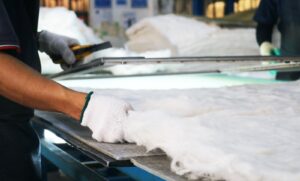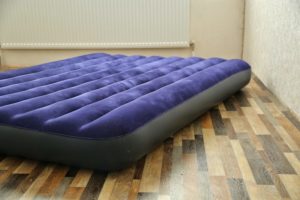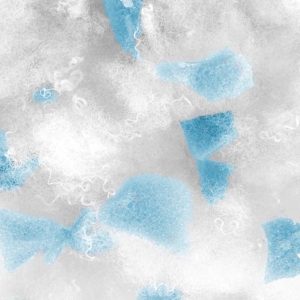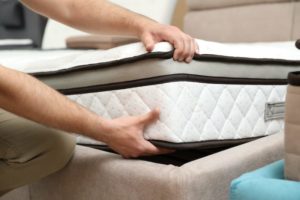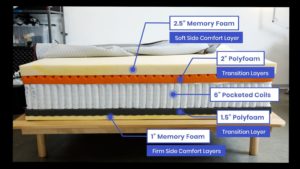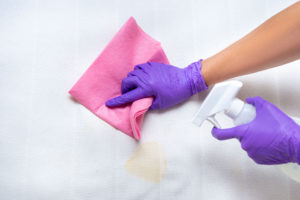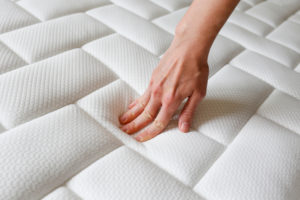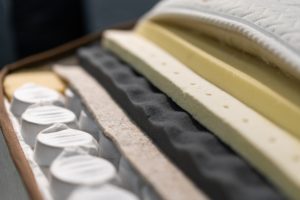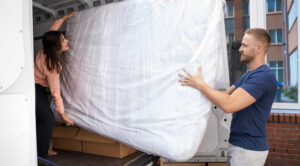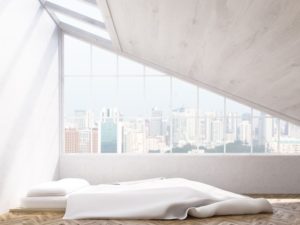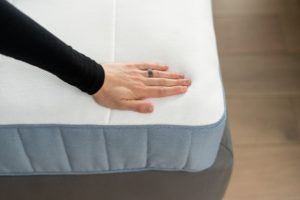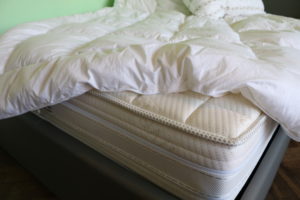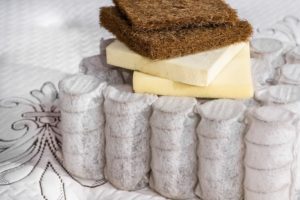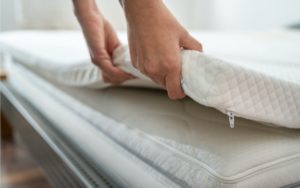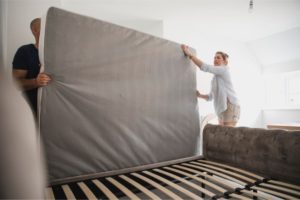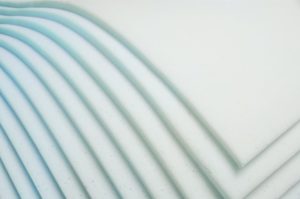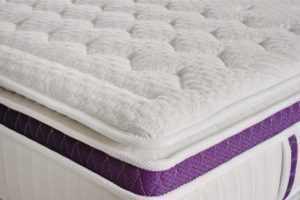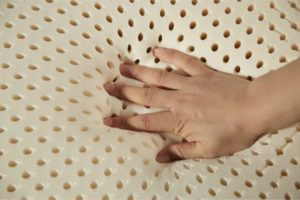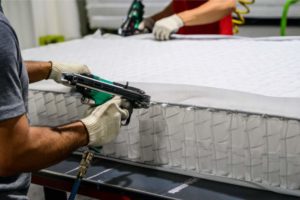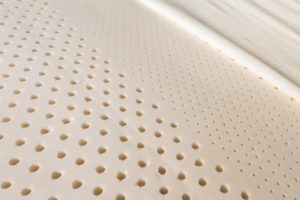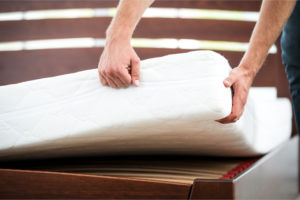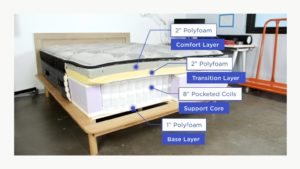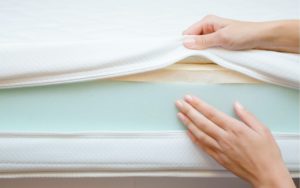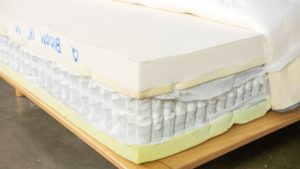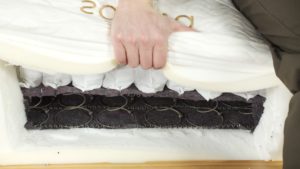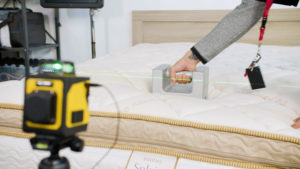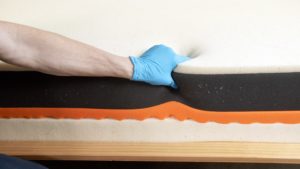Dunlop vs. Talalay Latex
Latex is a natural material that is manufactured from the sap of rubber trees. It’s used in a variety of manufacturing applications, including modern mattresses. Latex mattresses are prized for their durability, superior cooling, and excellent pressure relief.
While not as popular as memory foam beds, latex mattresses are becoming more common. Manufacturers use two types of latex to make these beds: Dunlop latex and Talalay latex. But what is the difference between Dunlop and Talalay latex? Which is a better choice for you?
Let us help you find the perfect bed
Answer a few questions to find the right mattress for your unique needs
What is the Difference?
The difference between Talalay and Dunlop latex is in the way the materials are produced.
The terms “Talalay” and “Dunlop” refer to specific manufacturing processes used to make these materials. The beginning material is the same and the major difference is in the manufacturing process used.
The Dunlop process is simpler, which typically means Dunlop latex products are less expensive than Talalay. Conversely, the Talalay process is far more involved, but it produces a softer and less-dense latex material that is better suited for certain applications.
Many manufacturers utilize both forms in their mattresses, so you may end up with a bed that uses both Talalay and Dunlop latex. Dunlop latex’s higher density and firmness make it ideal for the support core of a mattress, while Talalay’s softer feel is preferable for comfort layers.
How Dunlop Latex is Made
Dunlop is the original manufacturing process for latex foams. It was first developed way back in 1929, and the process has not changed much since then. This is the basic process for Dunlop latex:
- Liquid latex extract is mechanically whipped to form a frothy foam
- The frothy material is placed in a mold
- The material is baked in a vulcanization oven
- The baked latex is removed from the mold and washed thoroughly
- The material is baked again to remove moisture
This process produces a relatively dense, firm foam. The material is also not evenly distributed, which results in a “bottom-heavy” composition, where the bottom is firmer than the top. This composition is well-suited for support cores in mattresses, but is typically not as ideal for comfort layers. That being said, there are a number of mattress models that make use of Dunlop latex in their comfort layers.
How Talalay Latex is Made
The Talalay process is a bit more involved. It was developed in the 1940s and has been tweaked over the decades. Here is the modern process:
- Liquid latex extract is mechanically whipped to form a frothy foam
- The foam is injected into a mold; however, the mold is filled only partially
- The filled mold is vacuum-sealed, which causes the latex to expand
- The filled mold is then frozen rapidly, pushing carbon dioxide through the latex
- The frozen material is baked to set
- The latex is removed from the mold, washed, and dried
The Talalay process is designed to produce softer, fluffier latex with a more homogenous consistency. The resulting foam is softer and much less dense, which makes it well-suited for comfort layers, but not ideal for support cores.
Differences Between Dunlop and Talalay Latex in Mattresses
As mentioned, the main difference between these two foams is that Dunlop is firmer and more dense, while Talalay is softer, less dense and more homogenous in nature. When it comes to mattresses, here are the most noticeable differences between Talalay and Dunlop:
Durability
Dunlop is generally considered to be more durable than Talalay latex. This is due to the much higher density of Dunlop. With that said, both versions are exceptionally durable when compared to most other mattress materials.
Cost
Dunlop is generally less expensive to manufacture, mostly because the process is far less intensive. This can often be reflected in the final price of new mattresses, although the difference in price-points is generally small.
Feel
Generally speaking, Dunlop latex is firmer and more dense than Talalay latex. Often, this means that Dunlop is used for the support core in latex mattresses, while Talalay is reserved for top comfort layers. However, both versions can be engineered to a variety of firmness levels.
Temperature Neutrality
Talalay latex is generally more breathable than Dunlop latex, as it is less dense, and allows for better airflow. This results in Talalay offering slightly better temperature neutrality in most circumstances.
Environmental Sustainability
Latex in general, regardless of the manufacturing process, is considered to be more sustainable than alternatives such as memory foam. It’s naturally derived from a sustainable source, and it’s more durable than alternatives, offering a lower environmental cost in the long run. The Dunlop process is slightly less energy-intensive, so it may be somewhat more sustainable than Talalay.
Which Should You Choose?
If you’re mattress shopping, there are a variety of factors to consider. While the choice between Talalay and Dunlop latex is worthwhile to keep in mind, it’s generally not going to be one of the top considerations.
Both manufacturing processes can produce high-quality, durable, and comfortable latex. Ultimately, the overall quality of the mattress and the reputation of the manufacturer are typically more important than whether the bed utilizes Talalay or Dunlop latex.


